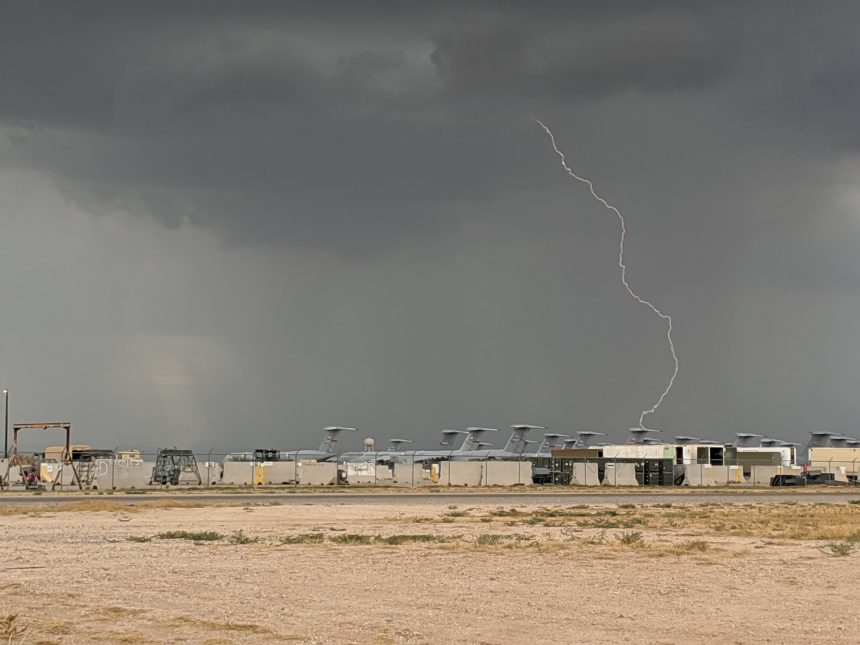An AMARG employee captured the fury of the storm as it swept through Davis-Monthan AFB recently.
The image in this post was shared by the 309th Aerospace Maintenance And Regeneration Group FB page. In was taken by Edd Kron on July 31, 2019 as a lightning hit a C-5 Galaxy at Davis-Monthan AFB, near Tucson, Arizona, where the aircraft is kept in storage by the 309th Aerospace Maintenance and Regeneration Group (AMARG) at the local “Boneyard”.
We have published several articles explaining that “close encounters” between jets and lightning occur every now and then around the globe, *usually* causing little to no damage at all to the planes. Usually, because sometimes, lightning strikes cause significant damage. As happened on Dec. 19, 2017, when B-52 Stratorfortress (60-0051), with the 93rd Bomb Squadron/307th BW AFRC. The heavy bomber was about to land at Barksdale AFB, Louisiana, when the crew heard something that sounded like a thud coming from the outside of the aircraft. The B-52 landed safely, but once on the ground the crew discovered that the sound they heard was actually a lightning strike that tore a person-sized gash completely through the tail of the aircraft!
Anyway, here’s what we have explained in one of our past posts:
In the 1980s, some F-16 Fighting Falcon jets were lost after being struck by lightinings. In one case, the lightning ignited the vapors in the empty centerline tank, which exploded causing extended damage to the aircraft’s hydraulic system.
Since lightning strikes are quite rare (1 event each year on average) these are seldom a real risk to military or civil aviation.
Furthermore, planes are shielded by a so-called Faraday Cage made by a conducting material, that blocks out external static electrical fields: charges redistribute on the conducting material and don’t affect the cage’s interior.
All commercial and mil planes have to meet several safety lightining-related requirements to get the airworthiness certifications required in the U.S. and Europe. For instance, they must be able to withstand a lightning strike without suffering significant airframe damage, without any possibility of accidental fuel ignition in the tanks and preserving the avionics and systems failures induced by the electromagnetic field created by the electrical charges of the lightning.
The Galaxy hit by the lightning bolt is one of the about 4,000 aircraft stored at the largest aircraft storage and preservation facility in the world: aircraft belonging to the AMARG categories of storage (Long Term, Parts Reclamation, Flying Hold, Excess of DoD needs) are cocooned using “spraylat” (a white, opaque, high-tech vinyl plastic compound sprayed) that protects the airframes and keeps the interior temperatures within 15° C.









